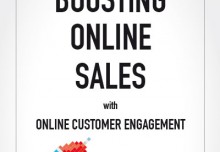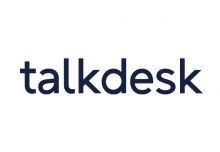Our thoughts on Forrester and their predictions for 2014.
Why is it so important to deliver on customer expectations? Customer satisfaction correlates to customer loyalty, and loyalty has economic benefits. According to Forrester who calculates that a 10-percentage-point improvement in a company’s customer experience score can translate into more than $1 billion in revenue – is that a reason enough to deliver on customer expectations? And to do so we have analyzed and written down our thoughts on Forresters 2014 predictions for customer service.
Forrester have organized their trends in four categories:
Deliver pain free customer service
Trend #1 – Customers Are Demanding Omnichannel Service.
For many years the customer dream have been to experience a transparent and seamless interaction with organizations. Unfortunately this has not been realized which is questionable as the technical possibilities for many years have been claiming their ability to help organizations with their unified communication etc.
The time has come for organizations to step aside their internal thoughts and to fully focus on delivering customer demand, Omnichannel service. The evolution of digital has raised the customer demands, as they now are well informed on various possibilities organizations explore to track the customer interactions. According to Forrester chat gets the second highest rating with 63% satisfaction scoring when customer wants quick, easy and effortless support. The importance of delivering cross channel touch points letting the customer starting their interaction in one channel and complete it in another is key to customer loyalty.
Trend #2 – Customer Service Will Adopt a Mobile-First Mindset
Mobile have for many years been discussed as the next big thing but the rapid development of mobile services and the rate of smart phones invasion, Mobile have claimed it’s position and is here to stay.
When asked, consumers today rate their smart phone so high that it are being described almost as a “life-partner” and for some it is even more. Moving beyond the basics, organizations need to get closer to customers, reaching them at their convenience, at customer demands. Technologies like chat, email and other self-service solutions are central to this and work fine in the mobile era.
Trend #3 – BPM Tools Are Being Used To Standardize Service Delivery
Time has come to truly understand the customer, and particularly their sentiment. In 2014 it will be key to build a deeper connection with your customers. Use your various solutions to gather and use feedback to create a true segmented digital customer lifecycle as well as developed service journeys based on previous consumer behavior and the current context.
Proactively engage customers for service
Trend #4 – Customers Expect Outbound Notifications
Accordingly to the Forrester “Forrsight Networks and Telecommunications” survey shows that 29% of Enterprises are planning to invest in proactive outbound communications in the next 12 months. Forrester also points to the active consolidation trend between customer operations organizations during 2013 and the trend of consolidating inbound and outbound services. Customers who are active enjoy outbound notifications and it builds loyalty and brand awareness. Just look how the email and newsletters communication evolved over the last 10 years, so will outbound notifications.
Trend #5 – Companies Will Explore Proactive Engagement
Inspiration drives us and digital intelligence guides us. In an evermore, digital driven economy that bolster vast amount of data, it’s easy to feel overwhelmed by all the enormous size of data collected by organizations. By knowing who to target, what to target with and when to engage, customer interactions get far more valuable. The trend with proactive customer engagement is sprung out of the possibility to track website visitors. By knowing whom you visitor are and in real-time analyze their intentions it is far more effective to proactively engage the relevant visitors with the right engagement. 2014 will be the year when we see a bridge between customer services and marketing in order to close the gap between problem and solution, integrating siloed information and services, and personalizing experiences based on context.
Trend #6 – Knowledge Will Evolve From Purely Reactive To Giving Advice
Forrester pictures the knowledge trend as a hard nut to crack. Customer service agents rely on having the correct information at their fingertips but often they find information/data structured in a way that it is neither contextual nor relevant to the specific matter. As Forrester point out, data must be maintained and structured in a contextual way otherwise it is not helping and thereby valued by customers and internal resources as negative. Therefore it’s important to look into the data within the organization and evaluate what kind of “data-reputation” it holds. The reputation is a clear indication on whether or not the information is found relevant by both parties.
Addressing self-service and knowledge from a customer’s perspective is in many areas found beneficial. As time is crucial it is important for customers to be given the possibility to serve themselves. Though a warning – even if a customer finds the correct answer to a single question, it does not imply the matter to be resolved, hence the selection of words to be advice instead of answers.
Also when addressing the trend #5 regarding proactive engagement, many organizations would benefit from creating a meaningful and customer centric dialogue with a customer representative. Especially when the organization values this as beneficial by analyzing the current phase in the customer lifecycle. Surely there is also an economical upside not to be forgotten in this, as sometimes it is far more beneficial serving the customer with a intelligent FAQ or contextual knowledgebase, but for the customer interaction where there is a larger engagement value to be considered – a personal interaction is perhaps the most economical solution for both parties in the long run?
Personalize customer service interactions
Trend #7 – Decisioning Will Power Offers, Actions and Connections
Forrester are looking into the combinations of rules and predictive analytics in order for the organizations to present personalized cross-sell and up-sell offers to customers. This is also used for decide whether to present an offer or communications based on customer sentiment.
This imply that in 2014 organizations will be far better on recommending the “next-best” thing during the service resolution process in order for them to offer services tailored to the unique customer need and demand.
2014 will be the year of predictive customer engagements based on true customer interactions.
Trend #8 – Customer Feedback Will Be Used To Operationalize Insights
Again Forrester sees the value of true customer interactions and the last couple of years massive drive on customer feedback based websites have driven this to another level. In 2014 Organizations will leverage customer feedback on two fronts: 1. Organizations will do their outmost to gain customer feedback across the channels and act on it in real-time. 2. Customer feedback will be measured and tied in to the performance metrics for the service organization and thereby hold some of the most important KPI’s for the Marketing and Service organization.
Trend #9 – Analytics Will Improve End-to-End Service
According to a survey conducted by Forrester 58% of companies inconsistently measure or fail to measure their customers cross channel journey. Measuring the outcome and results are somewhat the foundations for continuous improvements and without the numbers it is hard to improve.
When seeing the inconsistent and dysfunctional cross channel measurements Forrester points the trend of improvement within analytics to be very strong. They expect customer service organizations to move faster into holistic measurement programs for communication channels and touch points.
Focus on productivity for optimized service
Trend #10 – The Agent Experience Is No Longer An Afterthought
This trend is probably sprung out of the global trends correlated to Bring Your Own Device – BOYD and the new Bring Your Own App – BOYA which means that when all customer-facing applications around us continuously improves. It becomes business critical that applications and software used in the professional sphere mirrors the simplicity and enjoyable experience that occurs when working with applications in a personal environment. If you in your personal and private life in real-time and on demand can buy or even use free cloud based software or apps to perform tasks, organize your personal data etc. why should anyone in a business world be forced to use an outdated system or application?
Trend #11 – Customer Service Organizations Are Adopting SaaS Solutions for Agility
According to Forrester data it shows that approximately 15% of organizations have already replaced all or most of their on-premise customer service applications with software-as-a-service (SaaS) solutions; and 24% complement their existing solutions with SaaS. The advantages are many with some listed here:
Reduced time to benefit: Different from the traditional model, SaaS is already installed and mostly configured. The user has the advantage of provisioning the server in the cloud in within a couple of hours they can have the application ready for use.
Lover Cost’s: SaaS has a differential regarding costs since it usually resides in a shared or multitenant environment where the hardware and software license costs are very beneficial compared to traditional software models.
Scalability: Often SaaS solutions are fully scalable and meet the organizational demands without any problems or concerns.
Integration: SaaS solutions are often built with integration in mind as they focus on a single area. Therefore it is a huge benefit addressing the #6 & #7 trends based on interconnect-ability integrating solutions with the customer lifecycle in mind.
Trend #12 – Reliable Data At The Right Time Will Become A Cornerstone of Good Service
Again Forrester is focusing this trend on the Data reputation. Without reliable and trustworthy data there will never be consistency in the level of customer answers. Though this stated Forrester points to the fact that data governance is not a priority within organizations and that from a survey they conducted only 15% of organizations ranks their data governance maturity to be high.
To read the Forresters top trends for customer service in 2014 please click here.


















